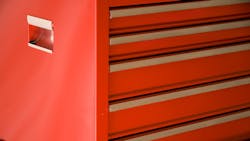Definition, components, and the purpose of the microbial toolbox
A microbial toolbox is a set of treatment options for the control of parasitic microorganisms and viruses in drinking water. These treatment options are in addition to the required filtration and disinfection, specified in subparts H, P, and T of the National Primary Drinking Water Regulations (NPDWRs).
While the microbial toolbox applies mostly for the control of the parasitic microorganism Cryptosporidium, it is also used for the control of Giardia lamblia (also a parasitic microorganism), and for viruses in general.
The drinking water treated by the microbial toolbox is supplied by public water systems originating from a surface water source or by a groundwater source under the direct influence of surface water. Both of these public water systems having a connection to the surface water source are known as subpart H systems. In addition to these public water systems, the microbial toolbox also applies to existing watershed control programs.
By demonstrating this compliance using the microbial toolbox, public water systems receive treatment credits in the form of numeric values. These values correspond to the percentage of the microorganism removed where 1 log reduction means 90% removal, 2 log reduction means 99 % removal and so on.
What tools are available in the Microbial Toolbox?
Table 1 shows the various tools, as options, available in the microbial toolbox for the additional control of the microbial parasites Cryptosporidium and Giardia lamblia, and also for viruses in general. These options include presedimentation, two-stage lime softening and bank filtration in the pre-filtration treatment (§ 141.717), bag and filter cartridges or membrane filtration in the additional filtration toolbox components ( § 141.719), and the use of chlorine dioxide, ozone and UV light in the inactivation toolbox components (§ 141.720).
What toolboxes in the Microbial Toolbox have been evaluated? Which are to be evaluated in the future?
The microbial toolbox options presented in Table 1, for assisting public water systems to comply with the LT2ESWTR, are current as of March 2022. Their inclusion in the NPDWRs means that of course, they have been evaluated.
Currently as of March 2022, there are no microbial toolbox options awaiting evaluation. However in regards to evaluations, one point in the microbial toolbox, in 40 CFR 141 Subpart W § 141.716 (a)(2)(i) should be clarified: The watershed control program must also include an “area of influence” outside which the possibility of Cryptosporidium or fecal contamination affecting the treatment plant intake is insignificant. This area is to be evaluated in future watershed surveys under § 141.716 (a)(5)(ii).
According to § 141.716 (a)(5)(ii), this survey must be done every three years for community water systems and every five years for noncommunity water systems. The area of influence is the area to be evaluated in future watershed surveys. While this might sound like it is a component of a microbial toolbox awaiting evaluation, this is not the case and rather, it is about future watershed surveys.
About the Author
Saleha Kuzniewski
Saleha Kuzniewski, Ph.D. has authored several publications in the fields of scientific research, biotechnology, and environmental regulations. She is the winner of the 2023 Apex award for publication excellence. She is also the founder of Environmental Remediation & Innovations, LLC. Kuzniewski can be reached at [email protected].


